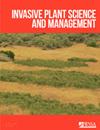评估入侵植物栖息地适宜性模型在威斯康星州新观测中的性能和准确性
IF 1.2
4区 生物学
Q3 PLANT SCIENCES
引用次数: 0
摘要
土地管理者需要一些工具来提高对入侵植物适宜栖息地的理解,并将其纳入调查工作中以提高效率。生境适宜性模型(hsm)包含可以满足这些要求的属性,但由于它们很少经过实地测试,因此不知道它们的性能如何。我们使用五种算法(增强回归树、广义线性模型、多元回归样条、MaxEnt和随机森林)在威斯康辛州为15个物种开发了集成hsm,评估了性能,确定了驱动适用性的变量,并测试了准确性。所有模型在开发阶段均具有良好的模型性能(曲线下面积[AUC] 0.7和真实技能统计[TSS] > 0.4)。虽然变量重要性和方向性是物种特有的,但所有物种模型中最重要的预测变量是冬季平均最低气温、夏季总降水量和树冠覆盖度。在模型开发后,我们从所有15个焦点物种的社区科学观测中获得了5,005条新的发生记录,以测试模型准确预测结果的能力。在80%的正确分类率下,15种中只有8种正确预测了适宜生境(α≤0.05)。探索性分析发现,这些新数据的报告数量和每个物种报告的新发生总数有助于提高正确的分类。结果表明,虽然一些模型在评估指标上表现良好,但仅依靠这些指标是不够的,并且在用于测量时可能导致错误。我们建议任何模型在使用前都应该在现场测试其准确性,以避免这种潜在的问题。本文章由计算机程序翻译,如有差异,请以英文原文为准。
Assessing the performance and accuracy of invasive plant habitat suitability models in detecting new observations in Wisconsin
Abstract Land managers require tools that improve understanding of suitable habitat for invasive plants and that can be incorporated into survey efforts to improve efficiency. Habitat suitability models (HSMs) contain attributes that can meet these requirements, but it is not known how well they perform, as they are rarely field-tested for accuracy. We developed ensemble HSMs in the state of Wisconsin for 15 species using five algorithms (boosted regression trees, generalized linear models, multivariate regression splines, MaxEnt, and random forests), evaluated performance, determined variables that drive suitability, and tested accuracy. All models had good model performance during the development phase (Area Under the Curve [AUC] > 0.7 and True Skills Statistic [TSS] > 0.4). While variable importance and directionality was species specific, the most important predictor variables across all of the species' models were mean winter minimum temperatures, total summer precipitation, and tree canopy cover. Post model development, we obtained 5,005 new occurrence records from community science observations for all 15 focal species to test the models' abilities to accurately predict results. Using a correct classification rate of 80%, just 8 of the 15 species correctly predicted suitable habitat (α ≤ 0.05). Exploratory analyses found the number of reporters of these new data and the total number of new occurrences reported per species contributed to increasing correct classification. Results suggest that while some models perform well on evaluation metrics, relying on these metrics alone is not sufficient and can lead to errors when utilized for surveying. We recommend any model should be tested for accuracy in the field before use to avoid this potential issue.
求助全文
通过发布文献求助,成功后即可免费获取论文全文。
去求助
来源期刊

Invasive Plant Science and Management
PLANT SCIENCES-
CiteScore
2.20
自引率
9.10%
发文量
24
审稿时长
6-12 weeks
期刊介绍:
Invasive Plant Science and Management (IPSM) is an online peer-reviewed journal focusing on fundamental and applied research on invasive plant biology, ecology, management, and restoration of invaded non-crop areas, and on other aspects relevant to invasive species, including educational activities and policy issues. Topics include the biology and ecology of invasive plants in rangeland, prairie, pasture, wildland, forestry, riparian, wetland, aquatic, recreational, rights-of-ways, and other non-crop (parks, preserves, natural areas) settings; genetics of invasive plants; social, ecological, and economic impacts of invasive plants and their management; design, efficacy, and integration of control tools; land restoration and rehabilitation; effects of management on soil, air, water, and wildlife; education, extension, and outreach methods and resources; technology and product reports; mapping and remote sensing, inventory and monitoring; technology transfer tools; case study reports; and regulatory issues.
 求助内容:
求助内容: 应助结果提醒方式:
应助结果提醒方式:


